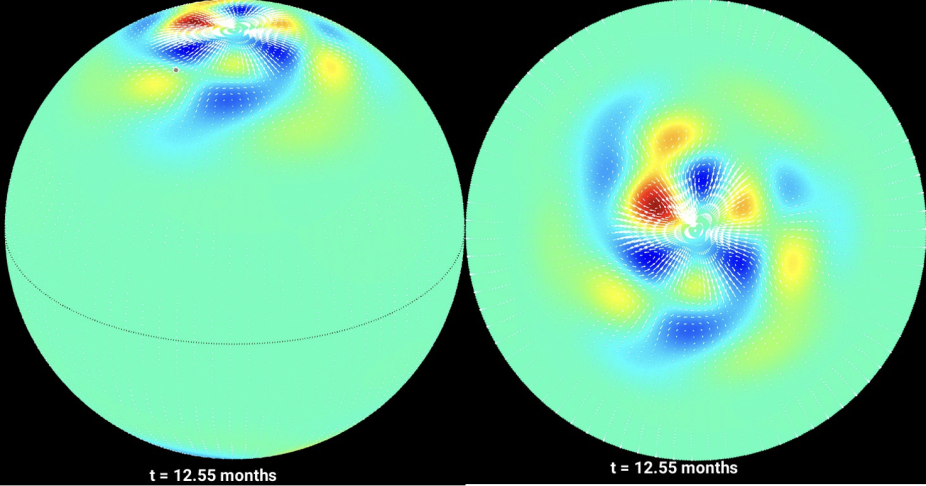PNAS (Proceedings of National Academy of Sciences): Polar vortices are ubiquitous features of planetary atmospheric flows, from the Earth-like rocky planets to Jupiter- and Saturn-like gas giant planets. Very little is known about their existence or dynamics on the Sun. What should be expected near the Sun’s pole for the upcoming solar multi-viewpoint and polar missions? Here we report the first magnetohydrodynamic nonlinear simulations for the formation and evolution of solar polar vortices using a near-surface magnetohydrodynamic shallow-water model. Our findings indicate that the rush-to-the-poles, the migration of magnetic fields towards the pole following the Sun’s magnetic cycle, can positively contribute to the formation of polar vortices. The mechanism proposed here for the formation of polar vortices is the first one to involve the role of magnetic fields and may be relevant to any star with a magnetic cycle. The Sun’s polar vortices resulting from this mechanism are predominantly magnetohydrodynamic, consisting of a tight pair of cyclonic and anticyclonic swirls. This mechanism is likely to operate during all solar cycle phases except the peak, when the polar field reverses. Polar vortices can impact dynamical evolution of global flows and polar fields, which seed the next activity cycle, hence better knowledge of physics of polar regions may lead to improved solar cycle and space weather forecasts. See: NSF-NCAR news website.

Simulations of magnetohydrodynamically governed polar vortices for a 30-degree inclined view (left) and for a polar view (right). Magnetohydrodynamic simulations show that the initial mid-latitude perturbations tend to drift and cluster around the forming multiple complex cyclonic and anticyclonic swirls. Following the polar rush, these swirls ultimately lead to an evolved configuration consisting of a pair of tight swirls with m=1 pattern.